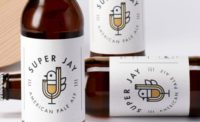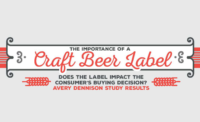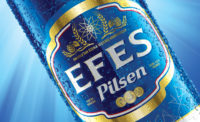Market Trends: Wine Packaging
Could wine be the new craft beer?
A look at the innovations in wine packaging that are catapulting the segment into stardom.






The buzz of craft beer seems finally to be fading. While on its surface the category may appear bubbly, over a decade of consistent double-digit growth has led to an oversaturated selection of brands on shelves. Today, expansion is slowing at a concerning rate; and while new breweries continue to appear, they’re mainly cropping up in concentrated markets, making it hard for all but a handful of brands to stand out and survive. Many industry experts speculate that the bubble will burst soon, if it hasn’t already. Others see this as an inevitable replay of when the “specialty beer” craze went flat in the late 1990s, causing so many craft brewers to close their doors.
But a new zeitgeist could be forming, with an opportunity to spark the imaginations and quench the curiosities of an entire generation. Wine is on the rise – particularly with younger consumers. In 2016, millennials overtook baby boomers in wine consumption (36% versus 34% nationwide). With 80 million strong, it is the largest generation in the U.S. and will have an estimated annual spending power of $1.4 trillion by 2020. These consumers are alpha influencers for their peers and other generations, ready to champion brands from early adoption to mass market – if they align with the brand’s values. Thirsting for brands that help them explore, feel understood and share, millennials contributed greatly to the magnitude of the most recent craft beer explosion.
Today, wine brands are scrambling to launch offerings that fit this younger crowd’s casual lifestyle, developing new packaging, clever labels and approachable messaging. Canned wines have become the fastest-growing segment, and rebellious, irreverent brands are trending. Many focus on simplistic motivations and usage occasions such as a backyard barbecue or a day at the beach. Just take FlipFlop Wines, which offers still and fizzy wine in fruity flavors that are “never pretentious,” designed for getting out and having some “flippin’ fun.”
But as millennials’ spending power increases and their appreciation for wine matures, could an even bigger revolution be forming? Could premium wines successfully adapt their rich stories, rituals, and cues to what these consumers want, and be the next frontier for discovery?
Let’s consider what’s made craft beer brands so successful and evaluate some notable efforts from wine brands looking to become more relevant with a millennial audience.
What craft beers are getting right
-
Hyper-authenticity: Craft beer brands know millennials are impervious to gimmicks. They want beverages from passionate makers with credible stories; they want to connect with the people and inspirations behind each bottle. From the local to the exotic, successful brands uniquely communicate their values and are transparent about their process. The result: rich, approachable narratives with genuine “talkability.” These stories stand up to scrutiny and give consumers a compelling reason to buy.
Take Widmer Brothers Brewing out of Portland, OR, which released limited-edition beers as a part of its “30 beers for 30 years” series in honor of the company’s 30th anniversary. Each label, created by a different designer from Portland, depicts a time in the brand’s heritage.
-
Fresh experimentation: Craft beer brands intuitively understand millennials’ desire for new experiences and adventures, and they know that beer is no exception. Open-minded and ready to break conventions, this generation thrives on innovation and progress. Craft beer brands know they must constantly push boundaries – or risk being left behind.
Commonwealth Brewing Company from Virginia Beach, VA, uses colorful abstract art to visually express the flavors of the beer inside, giving consumers a taste before they even crack open the can.
-
Superior convenience: Millennials’ unscheduled and hectic social lives present ever-expanding indoor and outdoor occasions for beverage brands. Whether they are at the cinema, at the beach, attending a concert, on a hike or enjoying a meal, they’re ready to embrace a new drink if the experience is easy. Beer has always been portable, primarily in single-serving containers, making it an obvious choice for on-the-go consumption. But as this audience explores, new settings can require new packaging. The beer category has been quick to innovate and adapt with helpful features like self-cooling cans, waterproof cases, handled multipacks, sturdy can carriers and swing-top bottle caps.
One brewery adapting quickly to changing consumer desires is Modern Times Beer from San Diego, CA. Using PakTech (paktech-opi.com) can carriers that are sturdier and more environmentally friendly than the common plastic ring design, Modern Times makes its beers easier to carry for on-the-go consumers.
So, how are wine brands adapting?
Much of the wine category has been slow to change, with many established brands perceived as unapproachable by younger consumers. Meanwhile, other contemporary brands with clever labels and fresh perspectives are springing up quickly, but often overcompensate and end up feeling trite. These brands are too disconnected from familiar wine cues, lack the depth required to withstand the test of time, and appeal to too niche of an audience.
One of wine’s biggest and longest-standing barriers to entry is convenience. We’ve seen incremental efforts to make wine consumption more practical: Think larger and smaller versions of known brands in the form of boxes, pouches, aluminum cans, plastic bottles and Tetra Paks (tetrapak.com). These modifications address some of the challenges of traditional, multi-serving glass bottles, but they can also feel less than the original experience and potentially degrade the brand. In contrast, some brands seem native to this new landscape. Their brand stories are either inextricably linked to their products’ form, or they have higher-order brand ideas that can credibly stretch into new areas without breaking. In these cases, more convenient packaging helps reinforce the brand’s meaning rather than detract from it.
Bonfire Wines is one brand succeeding with its packaging. With a progressive and responsible positioning, Bonfire celebrates doing what we love and sharing moments with friends and family. Every aspect of the brand experience supports this promise. Each package contains the equivalent of two bottles of wine and features a low-carbon footprint pouch with ergonomic handles and taps – all uniquely designed for sharing. Its signature shape prevents the pouch from sagging, and innovative materials keep the wine fresh for up to four weeks. The brand and messaging are focused and refined, yet instantly relatable.
Another wine brand pushing boundaries is Mark West. Since 1978, the wine brand has defined itself as passionate and dedicated, helping consumers stay “totally devoted to pinot.” It recently leaned into this idea by introducing a portable, single-serve wine package with four stacked, stemless PET glasses bundled in a shrink-sleeve label. Each glass has 187ml of wine, adding up to the same 750ml volume of a traditional bottle. The concept recognizes the importance of the glass for wine drinkers and solves the problem in a simple, yet innovative way.
Underwood from Union Wine Company continues to be one of the best examples of a brand that effectively made the jump from glass bottles to aluminum cans without diminishing its experience. Crafted as an approachable, everyday drinking wine, the brand has a strikingly contemporary and minimalistic feel. With careful attention to color and materials, transition to a can format is seamless, intuitive and on point. The brand is now in the process of launching sparkling wine options that are exclusively sold in cans, making this convenient format an integral part of its portfolio.
Cracking the code for wine brands
Wine brands haven’t yet perfected the balance between the demands of the millennial generation and the stories and rituals rooted in the wine category’s heritage. This younger audience seems ready for substantive brand promises from the wine world, but they want it on their own terms. Brands that take a leading position and disrupt the market will do so by combining hyper-authenticity, fresh experimentation and superior convenience in ways that are natural to the brand and category. They have an opportunity to holistically reinvent themselves, with new packaging formats and use cases in mind from the beginning to become more relevant to this younger audience and deliver uncompromised experiences.
A global leader in brand consulting and design, Landor creates agile brands that thrive in today’s dynamic marketplace. Landor’s branding services include everything from strategy, positioning and naming to identity, design and motion graphics. With 25 offices in 19 countries, Landor works with a broad spectrum of world-famous brands, such as Alitalia, BMW, FedEx, Nike, Kraft Heinz, Procter & Gamble, Sony and Taj Group. Landor is a member of WPP, the world’s largest marketing and communications firm.
For more information, visit Landor.com.
Looking for a reprint of this article?
From high-res PDFs to custom plaques, order your copy today!










